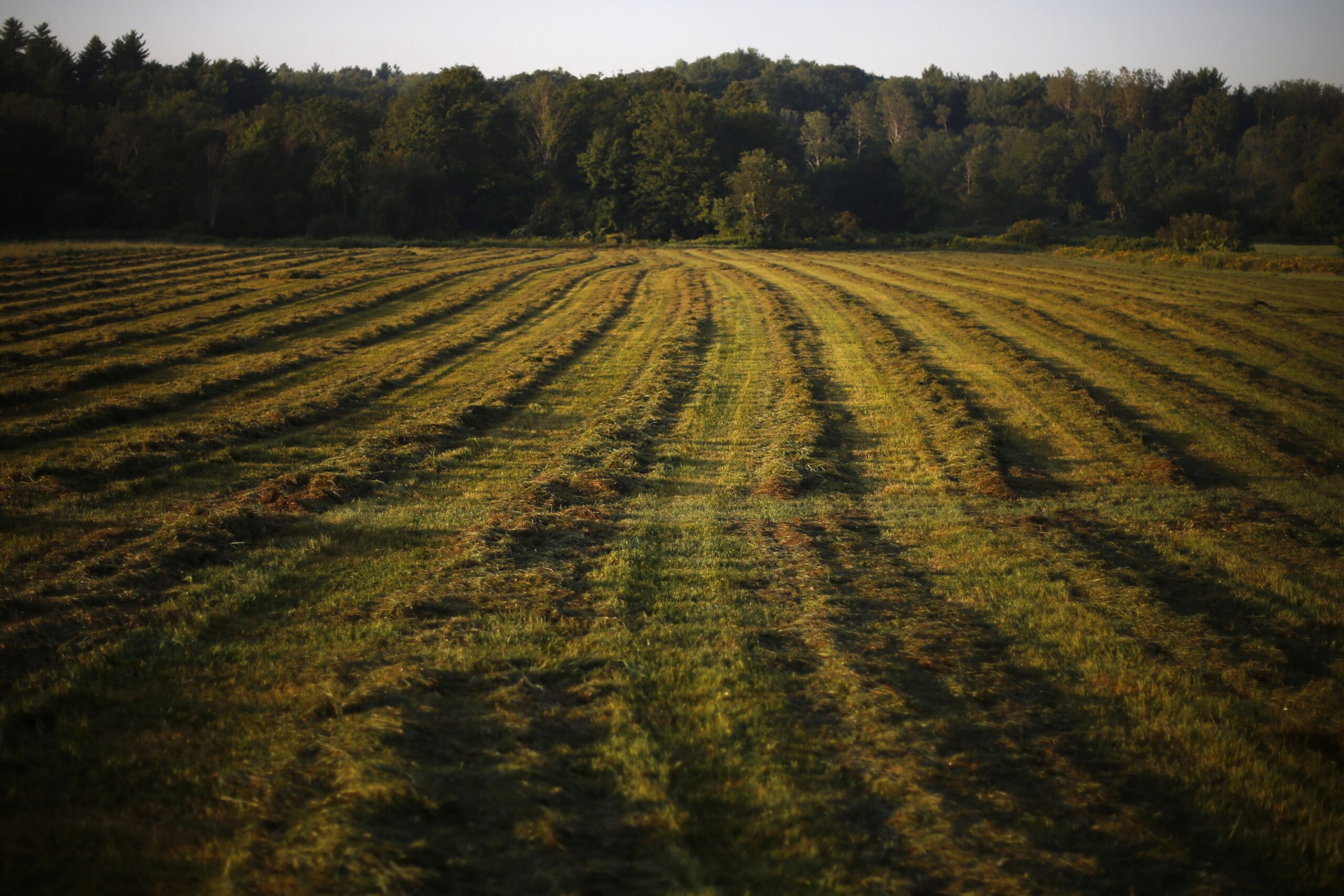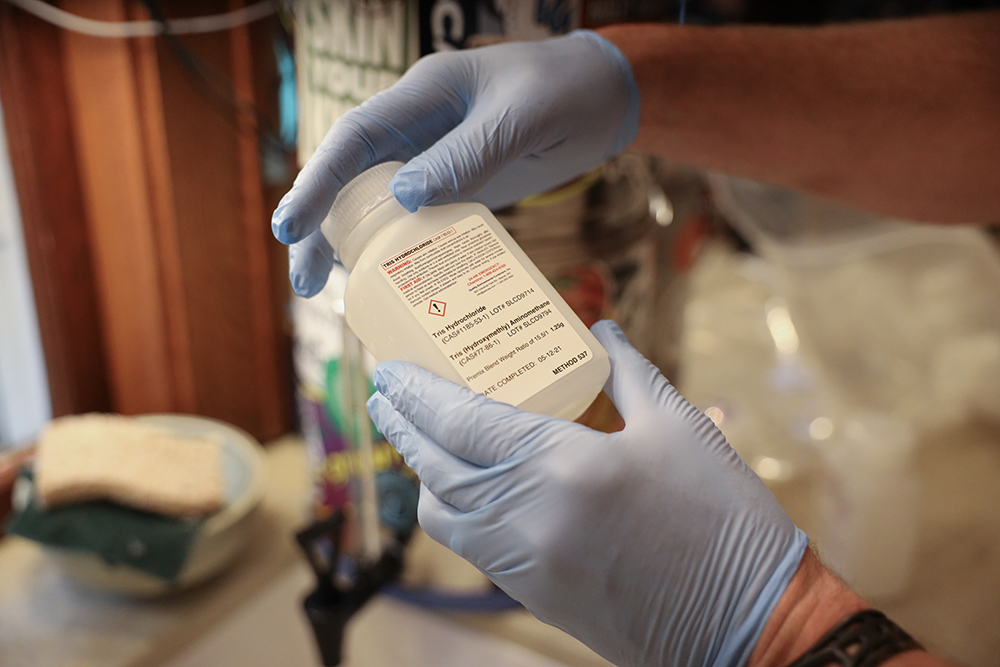Environmental groups and residents living with PFAS contamination urged the Wisconsin Department of Natural Resources to prioritize the benefits of its proposed groundwater standards for the chemicals over any economic effects on industry.
The comments were made Friday during a DNR hearing on the agency’s draft economic impact analysis regarding proposed limits for the chemicals in groundwater. The agency is crafting regulations for four PFAS chemicals that include PFOA, PFOS, PFBS, and HFPO-DA or GenX. The DNR is proposing limits based on recommendations from state health officials, which would be more stringent than Wisconsin’s drinking water standards for PFOA and PFOS.
For PFOA and PFOS, the agency is recommending standards of 20 part per trillion. The agency is recommending standards of 300 parts per trillion for GenX and 450 parts per billion for PFBS.
News with a little more humanity
WPR’s “Wisconsin Today” newsletter keeps you connected to the state you love without feeling overwhelmed. No paywall. No agenda. No corporate filter.
In 2019, the DNR first launched the process of setting groundwater standards for two of the most widely studied PFAS chemicals as part of a broader rule package. The Natural Resources Board failed to approve limits on the chemicals last year, prompting the agency to begin anew.
Jeff Lamont, who owns a home in the town of Peshtigo, said he and his wife have been relying on bottled water for nearly six years. Residents there have been struggling with PFAS contamination of private wells stemming from Tyco Fire Products’ fire training facility in Marinette. He criticized past economic reviews of agency regulations, indicating they didn’t fully quantify the benefits.
“If we miss this window of opportunity it could leave residential well owners unprotected for several more years,” Lamont said.

PFAS are a class of thousands of synthetic chemicals widely used by industry since the 1940s. They’ve been used in everyday products like nonstick cookware, food wrappers and firefighting foam. The chemicals don’t break down easily in the environment. Research shows high exposure to PFAS has been linked to kidney and testicular cancers, fertility issues, thyroid disease and reduced response to vaccines over time.
The DNR, residents and environmental groups say the standards are critical for around one third of state residents who rely on private wells that draw from groundwater. Wisconsin has around 800,000 private wells, and the DNR estimates 5,700 wells could be contaminated by PFAS.
The DNR has yet to finalize estimates of the total economic impact of the proposed standards. Steve Elmore, director of the DNR’s Drinking Water and Groundwater Program, told Wisconsin Public Radio there were too many unknowns to determine costs at this time. He said it’s unclear to what extent PFAS contamination may exist in groundwater at landfills or farms where sewage sludge, or biosolids, has been spread.
“We left this more open-ended, but we will finalize it after the input we received,” Elmore said.
DNR details some economic effects on facilities
While not finalized, the DNR anticipates its standards could affect six industrial facilities discharging wastewater or biosolids. Without knowing whether they would exceed limits, the agency estimated it may cost two industrial facilities up to $766,352 in any year to install treatment or take steps to address PFAS in biosolids.
For municipal wastewater treatment plants, the DNR said it may cost nearly $6 million over a two-year period to address PFAS in biosolids for a portion of facilities that are reissued permits each year. The agency estimated 74 plants have PFAS in biosolids ranging from low to significant levels. The DNR also estimates it may cost around $434,126 in the first year and $364,126 for at least one such facility to treat wastewater if it exceeds the proposed standards.
In Maine and New Mexico, thousands of dairy cows were culled after PFAS was discovered in their milk. During the hearing, Lamont said the proposed standards could help prevent contamination of the state’s more than 6,000 dairy farms and of their more than 1.25 million cows.

He noted PFAS-contaminated biosolids has been spread on thousands of acres in Marinette County. If even a fraction of Wisconsin’s dairy herds were affected, he said it would have an impact on the state’s dairy industry similar to what happened in Maine and New Mexico.
Cindy Boyle, a Peshtigo resident and former town chair, noted Maine proposed $100 million to deal with PFAS contamination at the state’s farms.
“If the process stagnates on the economic impact debate — which by the way only serves to benefit polluters — public safety remains at risk,” Boyle said.
Environmental and conservation groups also urged the agency to more fully quantify the benefits of its proposed groundwater standards, including Rob Lee, an attorney for Midwest Environmental Advocates.
“The ultimate success of it may very well depend on the level of benefits as compared to the costs,” Lee said.
State law may prevent standards if they prove too costly
A 2017 law known as the REINS Act limits the authority of state agencies to pass regulations that exceed $10 million in compliance costs over any two-year period without legislative approval.
Sara Walling, water and agriculture program director for Clean Wisconsin, told WPR in an interview the law could affect the agency’s proposed regulations for the chemicals.
“Because if it hits above that threshold of over $10 million over the course of two years to achieve compliance with these new standards, that puts it in a whole new realm of legislative oversight,” Walling said.

Under the law, the Republican co-chairs of the Legislature’s joint rules committee could request an independent economic analysis. The committee has previously suspended or blocked parts of an emergency rule on PFAS from taking effect. An aide to the committee’s co-chair, Sen. Steve Nass, didn’t return a request for comment Friday on whether he may seek an independent review.
While Walling said compliance with standards may prove costly, she noted one recent New York study found health care costs ranging from $5.52 billion to $62.6 billion nationwide for five diseases linked to PFAS exposure. Based on Wisconsin’s share of the nation’s population, she said health costs tied to PFAS could range from around $100 million to $1.1 billion in Wisconsin.
The DNR previously estimated groundwater standards could save the state hundreds of millions of dollars in avoided health care costs.
Draft analysis doesn’t consider costs to clean up PFAS
In its draft economic analysis, the DNR said almost 100 sites are currently being cleaned up for PFAS contamination. Even so, the agency doesn’t include estimated costs for remediation despite past comments that cleanup would cost far more than $10 million in a two-year period. Elmore said the DNR is already regulating the chemicals as hazardous substances under the agency’s existing authority.
Wisconsin’s largest business lobby, Wisconsin Manufacturers and Commerce, or WMC, has challenged the agency’s authority in a lawsuit filed on behalf of business owners. Last year, a lower court ruled the DNR must go through the state’s rulemaking process to list PFAS as hazardous substances before requiring businesses to clean up contamination. That ruling was put on hold as the agency appeals the decision, and an appeals court has yet to rule on the case.
WMC previously accused the DNR of underestimating compliance costs during the agency’s last attempt to pass groundwater standards. A WMC spokesperson declined to comment on the analysis Friday, saying it plans to file comments later this month.
Meanwhile, an intertribal agency highlighted concerns that groundwater standards were being developed without proper tribal consultation. James Rasmussen, a policy analyst for the Great Lakes Indian Fish and Wildlife Commission, noted the state’s Ojibwe tribes have set more stringent advisory levels for mercury in fish.
“Tribal members rely on fish especially. That is one food that is impacted by PFAS, and you’ll see fish cited over and over,” Rasmussen said. “The impacts on fish are known, and tribal members tend to eat more fish than the general public.”
The DNR is accepting public comment on its draft economic impact analysis through Oct. 28.
Wisconsin Public Radio, © Copyright 2026, Board of Regents of the University of Wisconsin System and Wisconsin Educational Communications Board.




